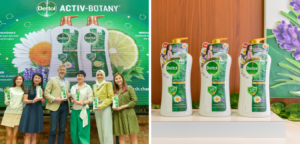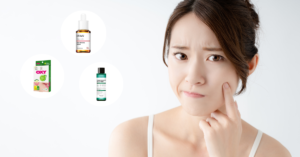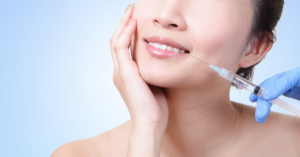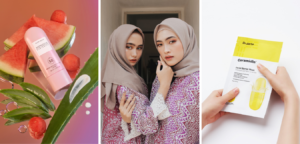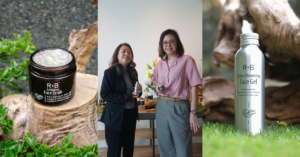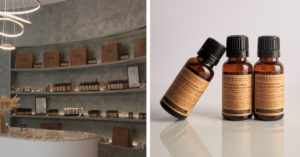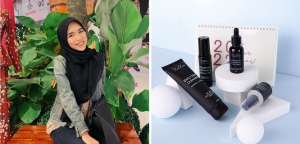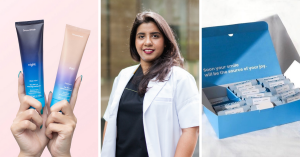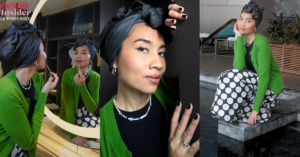#Insider Spotlight
Dr. Hew Talks Taking On The M.A.C Clinic, Malaysia’s Aesthetic Medicine Scene, and MORE!
Beauty in the eyes and hands of Dr. Hew!
By: Farah Khan / March 15, 2023

If beauty is in the eye of the beholder, then Dr Hew Yin Keat is the artist who brings it to life. As a pioneer in the field of Aesthetic Medicine in Malaysia, Dr Hew has dedicated his life’s work to creating beauty, no matter what your aesthetic concerns may be. With his extensive knowledge and experience, he has become a sought-after Botox trainer and founded the Malaysian Society of Aesthetic Medicine. Whether you’re looking for a subtle enhancement or a dramatic transformation, Dr Hew and his team of experts at M.A.C Clinic have the skill and artistry to make your dreams a reality.
With a new location at Great Eastern Mall, Dr. Hew and his crew of professionals are prepared to better the aesthetic medicine scene in Malaysia, one patient at a time. Located right next to Energy Spa, both centres of beauty that compliment each other well to bring out the best in each person that walks through their doors.
In this Insider Spotlight, we spoke with Dr. Hew to discover more about his expertise, his thoughts on Aesthetic Medicine, and the reason behind his bold move to take over M.A.C Clinic. You don’t want to miss what he has to say, so keep scrolling and start reading!
book now with 
Interview with Dr. Hew Yin Keat

Who Is Dr. Hew Yin Keat?
I came from humble beginnings as my parents were the first generation to venture out from a small village called Malim Nawar, near Kampar, seeking for more opportunities in Kuala Lumpur. We ended up staying at the YMCA in Brickfields when we first arrived in KL and we pretty much lived in rented houses all of my childhood and young adult life. My father was a great believer in self-learning and encouraged my sisters and I to learn as much as we could from reading books (computers were not yet available and when they arrived on the scene in my secondary school days, there was still no internet and my family couldn’t even afford one. We had a TV but no video player and couldn’t afford tuition for any subjects. So naturally I had a thirst and yearning for learning from whatever opportunities was given to me. Some families did financially well in the big city, but because my parents were not highly educated (neither one of them had a degree), there were fewer opportunities for them. Despite these handicaps, they managed to successfully nurture a lawyer, a doctor and a masters in mass communication.
My own hobbies are also simple. I loved swimming when I was young, then played badminton every chance I got like every true Malaysian. I started cycling in Singapore to save money on transport – I used to cycle daily from Yishun to Raffles Junior College in Ghim Moh, near Holland Village. I continued cycling in Ireland for pretty much the same reason and managed to complete the Dublin-Belfast-Dublin Maracycles 100 miles each way, twice. Getting back in my road bike saddle again during the pandemic, I’ve taken part in a few events, notably the Audax 200km ride in January 2022. A few years ago, I’ve taken to go-kart racing after yearning to develop better driving skills at speed when I bought my Porsche 911. More recently I developed an interest in gardening when the lockdowns were in place during the Covid 19 pandemic. I also dabble in photography in my spare time.
What made you decide to go into aesthetics? How long have you been practising?
After graduating from the Royal College of Surgeons in Ireland in 1997, I did my houseman-ship in the UK for a year before returning to Malaysia to complete the compulsory government service that all doctors wanting to eventually practice in Malaysia needs to go through. My aim was to do Internal Medicine, in particular Gastroenterology. However, as luck would have it, I was placed into the Anaesthesia department the moment I arrived at the hospital, and that was where I would remain for the 3 and a half years of government service. I grew to love it and wanted to specialise, but reality set in and I found I had to make the hard decision of going into the private sector and exploring my options there as the pay of a government doctor was quite incompatible with my aspirations. When I left government service, my take home pay was less than RM1400 per month after deductions.
As fate would have it, a friend of a friend, who is a practising aesthetic doctor and general practitioner in Singapore introduced me to the world of medical aesthetics, using medical know-how and procedures to enhance the beauty of a person and improving the skin’s appearance, often improving their confidence and opportunities. This was in 2002 and no respectable doctor in Malaysia wanted to be called a beautician or quack beauty doctor, which was what I was perceived as at that time when I told other doctors at CME (Continuous Medical Education) meetings what I was doing. “Oh, I see, you are doing non-evidence-based medicine” was one of the favourite comments I recall from another doctor I met. Apparently they had not yet seen the growing number of scientific papers published about Botox, fillers, laser usage and many other procedures that we now classify as aesthetic procedures. Fast forward a few years and I became one of the founders of Malaysian Society of Aesthetic Medicine.
Fast forward another few years and the Ministry of Health of Malaysia has set up a committee to oversee the practice of aesthetic medicine among aesthetic medical practitioners. I was one of the earliest members in the discussion and became part of the aesthetic medical practice committee which issues the Letter of Credentialing and Privileging (LCP) which every doctor who wants to practise aesthetic medicine in Malaysia now needs to obtain. A few more years later and I became President of the Malaysian Society of Aesthetic Medicine. Looking at the landscape now, it seems many doctors (and even non-doctors) from various fields aspire to become aesthetic doctors, in particular the younger generation of doctors seeking instant fame and fortune. It is hardly a surprise then that we now see aesthetic clinics sprouting up in major cities around the country, especially in affluent neighbourhoods like Bangsar. To be fair, the same can also be seen happening in many major cities around the world. Such is the universal appeal of beauty corrective procedures to people of all cultures and ethnicities.
You mentioned your takeover of the M∙A∙C∙ Clinic, what made you make that decision?

I must admit that it was a very big and bold step for me to make when it came to that. I started out as an employee and very minor shareholder at a clinic called Biogenesis (I came out with that name). After about 2 years, I was regarded as a first mover and pioneer in aesthetics in Malaysia and invited to a Botox training workshop in Bangkok. It was there that I met my predecessor who proceeded to offer me employment and an opportunity to buy over his established practise when I was ready. I joined in the practice in the middle of 2004 and by 1st January 2006, I was ready to take over the entire operations consisting of 2 clinics, one in a mall and the other in a unique setting of a bungalow. It was a bold move that I was not entirely ready for, but thankfully I was off to a running start with the established practice and a good and supportive team. Over the next few years, I grew the business until the monthly revenue was multiple times what it originally was when I took over. This was due to many factors, but most importantly I found that I was good at performing aesthetic procedures and making the right judgements when it came to selecting procedures and machines to carefully adopt for the practice. I now employ and train 3 other doctors at my clinics.
What would you say sets M∙A∙C∙ Clinic apart from others in Malaysia?

When I took over the clinic in 2006, I made it a point to safeguard the long-term health of my patients by only performing procedures that are medical in nature, proven safe and which I was proficient at performing. I set a high level of ethics for myself and my staff not to coerce patients into doing procedures which they didn’t need just to make a quick or tidy profit. We have a needs-based, patient-centric and physician-guided approach. I made it a point to keep abreast of the latest cutting edge advances so that I could provide a professional and honest consultation for my patients who usually tend to be well-educated and discerning anyway. I encourage my doctors to attend local and international conferences on aesthetic medicine every chance that we get. From these conferences, I met and shared ideas with many international like-minded doctors who also believe in maintaining high standards of medical ethics and patient care. I have also kept my prices realistic and reasonable without resorting to gimmicks and price wars with other clinics in the industry. I guess this is how we managed to survive and thrive over the past almost 20 years.
What also sets us apart from many aesthetic clinics around in Malaysia is also our international clientele. My doctors and I are very comfortable treating patients with multi-ethnic skin types and we can offer them treatments with machines from reputable international brands found in their own countries. I train my doctors to perform procedures matching international standards. One of the best compliments I’ve ever had (and which made me realise I was doing the right thing) was when a foreign patient mentioned that they’ve had the same treatments in places like London and Switzerland, and I performed just as well if not better than those highly reputable doctors.
After some years in aesthetic medical practise, I’ve also made it a point many years ago to give back to the community that has been supportive of my clinic. To that end, we are also a clinic that has regular CSR (Corporate Social Responsibility) activities in collaboration with other international and some local organisations. And ESG (Environmental, Social and Governance) initiatives naturally follow on from that.
A few years ago, aesthetic treatments such as liposuction, Botox, and fillers were taboo topics to speak of in Malaysia. It is rare one would admit to getting work done. Why do you think that this is slowly changing?
Before aesthetic medicine was popularised, people generally went to beauty salons for general skin maintenance and go for plastic surgery should they require any major changes to their appearances. These are two extreme ends of the spectrum of beauty services. Occasionally, some would do chemical peels or lasers at dermatology clinics that offer cosmetic dermatological procedures. Women had no inhibitions telling their friends about which beauty salons they went to. But when it came to plastic surgery, there were taboos because no one wanted to be called out for risking their health for vanity, especially in our conservative Asian cultures where traditionally, conformity and humility are more highly valued. Aesthetic clinics generally offer medical procedures which are non-invasive or minimally-invasive and fits nicely in the middle of this spectrum of beauty services. Initially, most of the injectable procedures were considered a major step and hence taboo.
But over time, due in large part to the widespread use of Botox and fillers, they came to be regarded as fairly common procedures that became part of people’s routines in grooming and upkeep rather than being regarded as major appearance-altering procedure done for vanity. Aesthetic doctors like me have also made it a point to correct fallacies and demystify these procedures and also made these treatments much safer with improving techniques. This makes the procedures more accessible and less often criticised, thus making discussing them much less of a taboo, with many even recommending their friends, spouse or family to go for the procedures now. The rise of social media in the last decade has also made open discussion about these procedures via celebrities and influencers more visible to the public, further breaking the taboos.
What are your efforts in making aesthetic treatments a more transparent topic, and talked about in the country?
Education all round has played a large role in making the topic more transparent. I was, and still am, an aesthetic evangelist in my limited capacity, spreading the word to fellow doctors, patients, the public and even the regulators in the Ministry of Health. It has indeed been a long and arduous journey over the years, but we have also made much progress. Continuing Medical Education has always been an important area for doctors, and teaching and research is even enshrined in the Hippocratic Oath. That being said, when it comes to Aesthetic Medicine which at face value appears to be superficial, frivolous and vain, it was an uphill task to convince certain segments of fellow doctors and regulators about the legitimacy of it as an area or faculty of medicine.
Why I am saying this is because without this understanding in the past, it was often dismissed and brushed aside relative to other fields of medicine. Where there is no acknowledgement of its legitimacy, there can be no proper transparency or even discussion about the proper practise of it in mainstream medicine. Thankfully, much research and development has happened in the past few decades to build a strong foundation for aesthetic medical procedures, done by pioneers and passionate doctors from all around the world. Studies are important to highlight safe and effective procedures, while weeding out the procedures which do not hold up to medical standards. And holding to high standards and strong values is the best way to ensure the continuing development of the aesthetic medicine field in Malaysia.
There is a long way to go for proper regulations and systems to be set for aesthetic treatments in Malaysia, as there are still many clinics out there performing unauthorised treatments, or simply lack the knowledge of performing it in the right way. How do you foresee it changing in the future? What are things that you’ve seen done in other countries that should be implemented in Malaysia?
On the contrary, Malaysia has actually started looking at this development of aesthetic clinics more than a decade ago and had set up a committee called the Aesthetic Medical Practice (AMP) Committee under the Ministry of Health to investigate discuss the issues arising from this trend. This committee, of which I have been a member for some years, comprises of Primary Care Doctors, Dermatologists, Plastic Surgeons and representatives from the ministry. A broad set of rules and guidelines were published in 2013, while many other countries were still grappling with the issues posed by increasing numbers of aesthetic clinics. While the guidelines were generally acceptable and good for the industry, implementation and in particular enforcement has been quite challenging in our country.
This has lead to a situation where there are now many non-medical practitioners claiming to be qualified and performing clearly medical procedures in ongoing practices around the country, touting their services flagrantly on social media. Many of these are young, attractive ladies with no medical background who have not been properly trained. However, this has not stopped them from persuading many members of the public to go for their services. There have been many cases of complications arising from these fly by night doctors requiring remedial work by aesthetic doctors and plastic surgeons, ranging from the less severe ones to fatal cases that have occasionally been reported in the news. There are clearly weaknesses in enforcement of basic laws when it comes to aesthetic medical services and also much to be done to educate the public. The practice of delivering beauty procedures to the public is very much in demand and potentially a lucrative one. However, there should obviously be boundaries as to what doctors and non-doctors can do.
Even among the doctors’ community, there are also occasionally those that cross the line by venturing into territory that they have clearly not been properly trained or accredited in. All this adds to the issues and challenges faced by the aesthetic medical industry in Malaysia and internationally. We do see better and more consistent growth of this industry in countries where the rules are more strictly enforced, such as in Singapore and Korea. Adherence to the boundaries will reduce complication rate and increase trust and confidence of the public in these type of services. This is crucial if Malaysia intends to have a healthy and growing medical tourism industry like Singapore, Korea and Thailand.
There are too many issues and I will not have the time to discuss here.
What are the most common treatments done at M∙A∙C∙ Clinic?
In the early days of the clinic back in the early 2000s, we were well known for problem pigmentation removal, skin brightening and rejuvenation with topical products and lasers. We continue to be a leading authority on all kinds of skin pigmentary problems, with the added advantage of a much larger stable of high end lasers to tackle those challenges such as the Clear & Brilliant, Starwalker, Dual Yellow and PicoSure lasers, to name a few. With my work and accumulation of experience and learning over the years, our clinics and doctors are also very proficient at injectable procedures like Botox, fillers and PRP.
We also now have body treatments for shaping, contouring, tightening and fat destruction with US FDA approved procedures and machines. Threadlifts and energy-based devices like HIFU (high intensity focused ultrasound) for safe facial firming are also routinely performed at the clinics. All in all, we cater to most of the skin and aesthetic concerns that our patients can think of, as we look after them over the years. And that is literally true, as different age groups will have different concerns requiring different management and procedures which we most likely have at the clinic. I have patients who have been with the clinic since they were brought by their parents for acne treatments, who have gone on to do treatments for more mature skin concerns, and who are now bringing their kids for acne treatment.
The M∙A∙C∙ Clinic has many celebrities and known figures as its clients and ambassadors. In your opinion, what makes M∙A∙C∙ Clinic a go-to for them?

Celebrities, stars and VIPs are people too – with the added pressure of needing their good appearances to be well preserved and maintained over the years, or in preparation for special appearances at events, shows, TV or movies. As such, it is important for them to find a doctor that is reliable, sufficiently-skilled and delivers consistent results over the years, hopefully without any major mishaps. When I first started treating very high-profile celebrities who have very high standards, are very observant and whose appearance is mission critical to their performances or success in a show, I must admit there was an element of pressure. I took my time and pored meticulously over their concerns and gave honest advice – as I do for all my patients as well. And surprisingly, that has worked out well for me. It gives me satisfaction when I see their faces looking glowing on stage at their performances and with a natural appearance that no one would even suspect they’ve had any procedures done.
Some celebrities and well-known figures need quick fixes or certain specific treatments in a hurry to get themselves red-carpet ready, and we cater for that as well. Where it can be done, I will suggest specific treatments. And where it cannot be done, I will advise accordingly so as not to give false hope.
There is also the issue of privacy and trust. I started practicing medicine in Malaysia at an ancient time when any form of medical advertisement was frowned upon (and often penalised by authorities) and you got patients mainly through word of mouth because you’ve done good work for patients – who then spread the word by recommending others. My clinic and I still maintain a relatively low profile compared to some in the field currently who employ massive “shock and awe” social media campaigns. We might only appear once in a while when we need to. Much as they might love their fans and following, not all celebrities appreciate private times and details of their life being scrutinised. I believe I have maintained my reputation for patient confidentiality over the years. Unless that is, the well-known person has no issues discussing this detail openly and want to put in a good word for my clinic, so that some awareness is created. And over the years, I have been fortunate to have found some of these kind souls. For want of a better word, I started referring to them as ambassadors, and some of them have been with me for many years. In case you’re wondering, they ALL came to me as genuine fee-paying patients of my clinic who found the procedures helpful and effective. I did not hire them or sign them on to appear in advertisements for my clinic. I would find such arrangements to be forced and contrived. And as such, my ambassadors and I have friendly relationships, which I treasure.
What are your plans for M∙A∙C∙ Clinic in the near future? How do you see it growing in 2023?
My plans for the future will always be to see as many happy patients as possible! I’ve just launched a new branch at Great Eastern Mall in Ampang, our first foray out of Bangsar where we’ve had our 2 clinics for the past many years. I’ve noticed that my patients have not minded travelling even across state borders over the years to avail of our services. However it’s always exciting to embark on new projects and journeys to keep things fresh and exciting. The new clinic in GE Mall brings our services closer to the people around Ampang and the heart of KL. We are also moving out of the bungalow at No 12, Lorong Maarof after 17 years as the area is getting too congested, with many developments occurring in the narrow back lane. Moving forward, look out for some interesting developments this coming year as activities go back into full swing. It is going to be an interesting year ahead. Keep watching this space!


